Nuclear Energy
A community for nuclear energy enthusiasts.
Slovenia’s state-owned power company GEN Energija is to make public research showing that the location of the existing Krško nuclear power station and a planned new reactor is safe from the point of view of seismic activity.
The company also said it will also publish further studies related to various aspects of the new-build project before a final decision is taken and a planned referendum is held.
GEN Energija said that, at the request of the Ministry of the Environment, Space & Energy, a series of documents related to various studies and reviews will be published on the new-build project website by October to enable people to make an informed decision in the referendum.
Slovenia wants to build a new nuclear plant at the Krško site, in the east of the country, and is planning a referendum on the issue, although no date has been set. The new build project is known as JEK2.
In an update on its new build plans GEN Energija said that to assess the seismic risk in the area of the existing Krško plant and the planned location of JEK2, two types of analysis had been used based on internationally established methodology – probabilistic seismic hazard analysis (PSHA) and probabilistic fault displacement hazard analysis (PFDHA).
A PSHA was ordered by Slovenian nuclear utility Nuklearna Elektrarna Krško (NEK) in 1994 and 2004.
From 2008 to 2011, geotechnical, geological and seismological research was carried out. That research led one of the four partners, France’s Institut de Radioprotection et de Sûreté Nucléaire to express concerns about a possible active fault and suggest performing a PFDHA.
Other project partners including the Geological Survey of Slovenia did not express similar concerns. However, GEN Energija commissioned the PFDHA and an international independent review, which concluded that the probability of fault movements was “insignificant”.
‘Negligible’ Risk To Existing Or New Reactors
This was followed by another PFDHA in 2013, which concluded there were extremely small, negligible risks of exceeding surface displacements for engineering needs.
The authors of the study and the independent international reviewers agreed that the danger was negligible and did not pose a risk to the existing or to the new nuclear power station.
A large-scale PSHA project is underway, which began in 2015. The third and final phase of the project is undergoing an independent international review, which will be completed later this year.
The existing single 688-MW PWR at Krško, which was built in cooperation with US company Westinghouse, began commercial operation in 1983. The facility is co-owned in equal shares by the governments of Slovenia and neighbouring Croatia.
In January 2023, Slovenian authorities approved a 20-year operating lifetime extension to Krško, meaning the reactor unit could operate until 2043, a total of 60 years.
Slovenia has been considering the construction of a second plant at the site and earlier reports said a final decision on the project would be made in 2027 or 2028, with commercial operation in the mid-2040s.
The US has issued a request for proposals to buy up to $2.7bn (€2.5bn) of enriched uranium from domestic sources in an effort to boost supplies of the nuclear reactor fuel and move the country away from buying it from Russia, the Department of Energy (DOE) said on Thursday.
The DOE said the move will help spur the build-out of uranium enrichment capacity in the US, promote diversity in the market, and provide a reliable supply of commercial nuclear fuel to support the energy security and resilience of the American people and domestic industries, free from Russian influence.
The $2.7bn in funding was part of legislation signed by president Joe Biden in May that imposed a ban on imports of enriched uranium from Russia, as part of sanctions on the country for its full-scale invasion of Ukraine.
Last year Russia provided almost a quarter of the enriched uranium used to fuel the US’s fleet of 94 nuclear plants, making it the number one foreign supplier to the US, according to the DOE.
According to the US Energy Information Administration, Russia has been supplying about 24% of enriched uranium with 12% from Germany and 11% from the UK. The US itself supplies 27%. Those sales provide an estimated $1bn a year to Russia.
The DOE said it plans to award two or more contracts, which will last for up to 10 years. The sources can include new enrichment facilities or projects that expand the capacity of existing enrichment facilities.
“DOE is helping jumpstart uranium enrichment capacity here in the United States, which is critical to strengthening our national security and growing our domestic nuclear industry,” said energy secretary Jennifer Granholm.
International Atomic Energy Agency (IAEA) experts have confirmed that the tritium concentration in the seventh batch of diluted ALPS treated water, which the Tokyo Electric Power Company (TEPCO) began discharging today, is far below Japan’s operational limit.
The treated water was sampled by IAEA experts stationed at the Agency’s office at the site of the Fukushima Daiichi Nuclear Power Station (FDNPS). After conducting an independent on-site analysis, the IAEA confirmed that the tritium concentration in the diluted water is far below the operational limit of 1500 becquerels per litre and is in line with international safety standards.
Japan plans to continue discharging the ALPS-treated water from the FDNPS in batches. The IAEA has earlier confirmed that the tritium concentrations in the previous six batches, totalling approximately 46,500 cubic meters of water, were far below operational limits.
Japan’s plan is to conduct a series of controlled discharges of ALPS treated water into the sea over a period of decades. The sixth batch was discharged from May 17 to June 4.
In a comprehensive report issued on 4 July 2023, the IAEA’s safety review found that Japan’s plan for handling the treated water was consistent with international safety standards and that the release as planned would have a negligible radiological impact to people and the environment.
All reports on sampling, independent analysis, data evaluation, as well as timeline, will be available on the IAEA website.
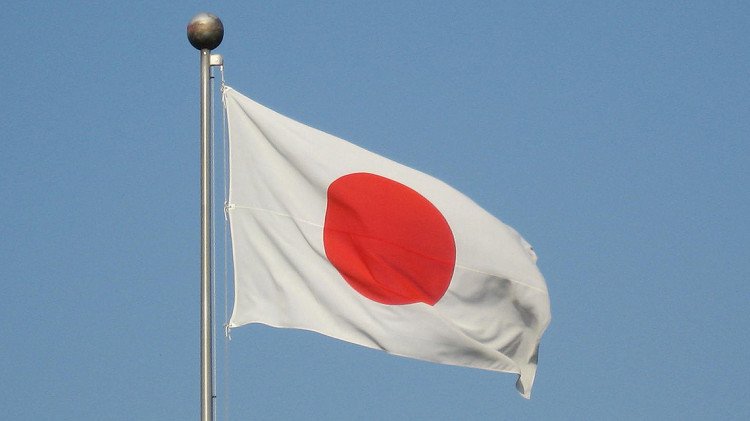
Kyle Hill, known pro-nuclear science communicator, was banned from the Reddit community r/NuclearPower for his pro-nuclear stance.
Turns out the community has been taken over by anti-nuclear mod(s).
Posting about this I’ve been banned too 😂
If you remain on Reddit, r/Nuclear is still a valid community. Otherwise we exist of course!
Kyle’s post on Threads on this: https://www.threads.net/@sci_phile/post/C8xqujdy2ge/
Source: https://www.world-nuclear-news.org/Articles/French-molten-salts-research-lab-aims-to-become-le
Naarea, the developer of a molten salt fast neutron microreactor, is partnering with the French National Centre for Scientific Research (CNRS) and Université Paris-Saclay to create a laboratory dedicated to molten salt chemistry which aims to be the European leader in research and development for both nuclear molten salt reactors and non-nuclear applications.
The new Innovation Molten Salt Lab will bring together the 20-years of expertise in molten salts chemistry from the Laboratoire de Physique des 2 Infinis Irène Joliot-Curie (ICJLab) with Naarea's "technological knowledge in the fields of materials, neutronics, safety analysis and materials and fuel data".
A statement announcing the project said the new lab's roadmap "will aim to foster collaborative work and capitalise on the concepts and innovations developed at Naarea to the benefit of the European molten salt reactor sector ... the goal ... is to become the European leader in the field of molten salts research and development, for both molten salt nuclear reactors and other non-nuclear applications such as metallurgy and concentrated solar power".
In quotes
Naarea CEO Jean-Luc Alexandre said the new lab "allows us to pool our skills and demonstrates our ability to step up our efforts to develop our XAMR project ... [and] marks a significant milestone for Naarea, which is positioned to make a vital contribution to establishing and achieving recognition for true French leadership and expertise in the field of molten salt research at the European level. This valuable expertise will not only have a positive impact on Naarea, but also on a variety of industrial sectors, whether related to nuclear energy or not".
Deputy CEO for Innovation at the CNRS, Jean-Luc Moullet, called it "an ambitious joint laboratory that symbolises the contribution of French research to the revival of the nuclear sector. The CNRS encourages the development of joint laboratories, which offer a flexible and long-term framework conducive to the development of fruitful public-private partnerships".
President of Université Paris-Saclay, Camille Galap, said: "Université Paris-Saclay is a research-intensive university committed to contributing to finding solutions to scientific and technological challenges. We are therefore delighted to join this partnership with Naarea and the CNRS to create the joint laboratory IMS Lab, whose research work will help respond to the critical challenges of decarbonising energy, in particular for industry."
The background
Naarea - the name is taken from Nuclear Abundant Affordable Resourceful Energy for All - was founded in 2020 and was one of the winners of the France 2030 investment plan for innovative nuclear reactors. It is developing the XAMR, an advanced modular reactor, a molten salt fast neutron microreactor capable of producing 40 MWe of electricity/80 MWt of heat that will burn plutonium and by reusing long-lived nuclear waste help close the fuel cycle.
The company says the XAMR will be about the size of a bus and it intends to target applications in areas such as transportation, agriculture and smart buildings. Naarea says that, because of the compact size of its reactor and because there is no need for it to be grid-connected, the XAMR can "be deployed as close as possible to regions, to match energy demand as closely as possible and allow the control of security of supply, at the service of industries and communities". The aim is to be on the market by 2030.
MSRs use molten fluoride salts as primary coolant, at low pressure. They may operate with epithermal or fast neutron spectrums, and with a variety of fuels. Much of the interest today in reviving the MSR concept relates to using thorium (to breed fissile uranium-233), where an initial source of fissile material such as plutonium-239 needs to be provided. There are a number of different MSR design concepts, and a number of interesting challenges in the commercialisation of many, especially with thorium.
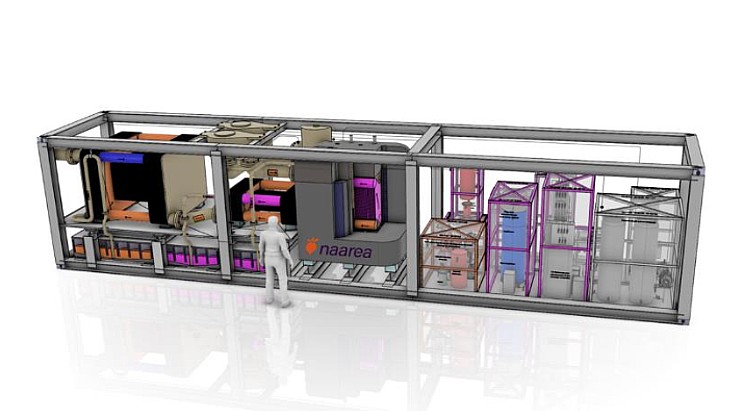
Source: https://www.world-nuclear-news.org/Articles/Fuel-assemblies-with-3D-printed-bottom-nozzles-tes
Four lead test assemblies supplied by Westinghouse featuring 3D-printed bottom nozzles have been used at Southern Nuclear's Farley nuclear power plant in Alabama. Westinghouse says the components improve debris capture and fuel endurance within its fuel assemblies.
According to the company, debris-wearing action on the fuel rod cladding - known as debris fretting - is the primary source of leaks in pressurised water reactor (PWR) fuel assemblies.
Additive manufacturing technology, it says, offers significant improvements in debris filtering thanks to enhanced design freedom which reduces the diameter of debris that can enter into the reactor. In testing, the additively manufactured components demonstrated a 30% improvement in debris resistance, from 65% to 96%.
"Our additive manufacturing technology is allowing us to achieve breakthrough performance with an immediate positive impact for our customers," said Westinghouse President of Nuclear Fuel Tarik Choho. "This significant technology innovation for PWR reactors mitigates the risk of leakage in the fuel rods due to the accumulation of debris, strengthening the safety and efficiency of our customers' operations."
Southern Nuclear President Pete Sena added: "Over the past decade, Southern Nuclear has led the industry in the development and implementation of new technologies that improve fuel resiliency. The existing nuclear power fleet is the backbone of our country's clean energy supply, and we are innovating nuclear fuel today to be more robust in order to deliver safer, more affordable and more reliable carbon-free clean nuclear power for decades to come."
Additive manufacturing (AM) - or 3D printing - simplifies the manufacturing process by building a three-dimensional object from a computer-aided design model, usually by successively adding material layer by layer.
In 2015, Westinghouse conducted the first-ever material irradiation study of AM nuclear components. In 2020, the company installed the first-ever safety-related AM component, a thimble plugging device, into an operating commercial reactor, unit 1 of Exelon's Byron plant in Illinois.
Nuclear fuel debris filters manufactured by Westinghouse using 3D printing technology have been installed at unit 2 of the Olkiluoto plant in Finland and unit 3 of the Oskarshamn plant in Sweden. Westinghouse said the StrongHold AM filters are fully manufactured through 3D printing techniques and offer enhanced capture features to prevent debris from entering the fuel assembly and potentially damaging the cladding, which could cause unplanned and expensive outages.
In 2024, Westinghouse produced the 1000th additive manufacturing component for VVER-440 fuel.
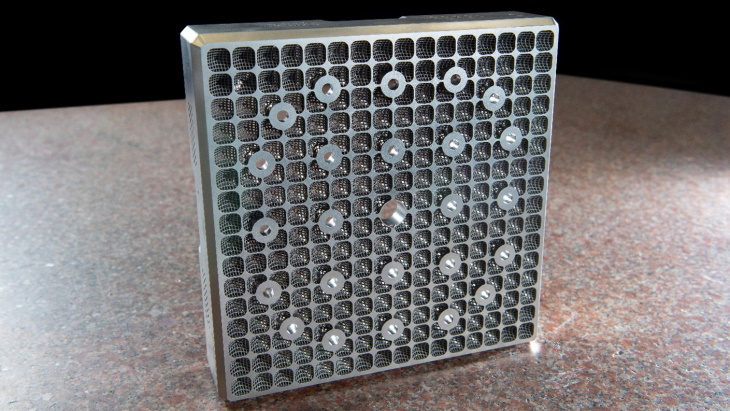
Source: https://www.world-nuclear-news.org/Articles/Containment-tests-completed-at-first-Zhangzhou-uni
Tests to check the integrity of the containment structure have been completed at unit 1 of the Zhangzhou nuclear power plant in China's Fujian province. The unit is the first of three Hualong One (HPR1000) reactors under construction at the site.
The two-part tests confirm that the containment vessel meets design and construction quality requirements. The first part - the structural integrity test - involved the vessel being pressurised and monitored to confirm that its design and construction meet all applicable industry codes and standards at 110% of design pressure.
The vessel was then pressurised to design pressure (0.420 MPa) and the integrated leak rate test was performed to demonstrate its ability to prevent the release of radioactive materials in the event of an emergency.
During the containment pressure test, the containment leakage is checked through the acoustic leak detection test, and the changes in the containment structure performance are monitored through internal visual inspection and external visual inspection tests.
The tests were successfully completed on 20 June, China National Nuclear Corporation (CNNC) subsidiary China Nuclear Industry 23 Construction Company Limited (CNI23) announced.
China's Ministry of Ecology and Environment issued construction licences for Zhangzhou units 1 and 2 on 9 October 2019 to CNNC-Guodian Zhangzhou Energy Company, the owner of the Zhangzhou nuclear power project, which was created by CNNC (51%) and China Guodian Corporation (49%) in 2011. Construction of unit 1 began one week after the issuance of the construction licence, with that of unit 2 starting in September 2020.
"According to the plan, unit 1 will generate electricity within the year, which will drive the economic and social development of southern Fujian and serve as a new development engine for the region to achieve carbon peak and carbon neutrality goals," CNNC said last month. It noted that preparations are currently under way for cold functional tests at unit 2.
In September 2022, China's State Council approved the construction of two further Hualong One units as Phase II of the Zhangzhou plant. First concrete for the nuclear island of unit 3 was poured on 22 February this year. CNNC said first concrete for unit 4 is expected "within the year".
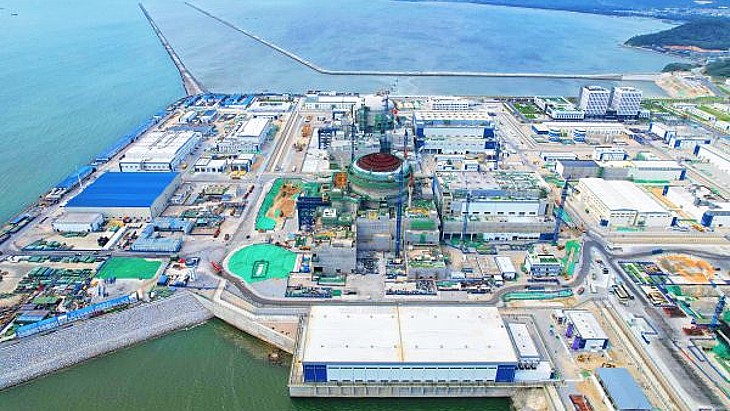
Source: https://www.world-nuclear-news.org/Articles/Kazakhstan-s-nuclear-energy-referendum-to-be-held
President Kassym-Jomart Tokayev has said that a referendum on plans for a nuclear power plant in Kazakhstan will be held this autumn.
In a speech to media representatives in the country, the president said that "a stable source of energy is necessary for the development of the economy". He said there was "a comprehensive discussion" taking place about the proposed nuclear power plant with "different opinions" and he said the country's mass media "should also actively participate in this process".
He added: "There is a great opportunity to develop nuclear energy in the country. It should be used correctly, effectively. The people will make the final decision on this issue. The referendum will be held this autumn and the government will determine the exact date."
The potential reintroduction of nuclear power is aimed at reducing the country's reliance on fossil fuels, diversifying its energy mix and reducing CO2 emissions. Kazakhstan Nuclear Power Plant (KNPP), which has been designated as the owner/operator of the future plant, began preparing a feasibility study in 2018 to justify the need for nuclear power, the choice of the location for plant construction and to review the plant's projected power output.
Although a positive result in the referendum will be needed for the project to go ahead, some details of the proposed plan have already been emerging, with the World Nuclear Spotlight event in April in the country hearing that a site at Ulken, on the shores of Lake Balkhash, had been identified as the most suitable location, with Kurchatov as a backup region. The proposed first nuclear power plant would be a large reactor but there are also options for using small modular reactors to replace retiring coal plants in the years to come. The government's target is for nuclear to produce a 5% share of the national generation mix by 2035.
The background
Kazakhstan has 12% of the world's uranium resources and in 2022 it produced 43% of the world's uranium. It has three operating research reactors and a Russian-designed BN-350 sodium-cooled fast reactor operated near Aktau for 26 years, until 1999.
In November 2023, an International Atomic Energy Agency team conducted a five-day Site and External Events Design (SEED) mission to review the country's site selection process. In January 2023, the Ministry of Energy said that four foreign potential suppliers of nuclear technology were being considered - EDF of France, China National Nuclear Corporation, Korea Hydro & Nuclear Power and Rosatom of Russia.

Japan’s Nuclear Regulation Authority (NRA) has approved extensions to the operational lifetimes for Units 3 and 4 at Kansai Electric Power’s Ohi nuclear station based on a law that was enacted in May last year.
It is the first time the nuclear regulator has approved a long-term facility management plan based on the green transformation law, which is scheduled to take full effect in June 2025.
The two reactors at the station in the town of Ohi, Fukui Prefecture, western Japan, both began operation over 30 years ago. Following the NRA approval, they are now allowed to operate for up to 40 years.
Under the law, nuclear operators must formulate a long-term reactor management plan and gain approval from the regulator at least once every 10 years if they are to continue to operate.
The new policy effectively extends the period reactors can remain in operation beyond 60 years by excluding the time they spend offline for inspections from the total service life.
Ohi-3 can now operate until 17 December 2031 an Ohi-4 until 1 February 2033.
Ohi-3 and -4 are both 1,127-MW pressurised water reactor units. Ohi-3 began commercial operation in 1991 and Ohi-4 in 1993.
Before Fukushima-Daiichi, Japan’s fleet of 54 nuclear plants generated about 30% of the country’s electricity, but were all shut down for safety checks following the accident.
Among the 33 operable nuclear reactors in Japan, 12 have resumed operations after meeting post-Fukushima safety standards. The restarted plants are: Sendai-1 and -2, Genkai-3 and -4, Ikata-3, Mihama-3, Ohi-3 and -4 and Takahama-1, -2, -3 and -4.
According to the International Atomic Energy Agency nuclear generated about 6.1% of the country’s electricity in 2022. The Tokyo-based Japan Atomic Industry Forum said recently that the fleet generated 81 TWh of electric power in 2023, about 50% higher than 2022.
Finland has successfully completed its first nuclear decommissioning project with the dismantling of the FiR1 research reactor, which operated for over 50 years at the VTT Technical Research Centre premises in Otaniemi, Espoo, near the capital Helsinki.
The decommissioning project was carried out by utility Fortum, which owns and operates the Loviisa nuclear station in Finland, in collaboration with VTT, the reactor’s owner.
The dismantling process, which began in June 2023 and ended in April 2024, marked a significant milestone in Finland’s nuclear industry, said Fortum. VTT received regulatory approval for decommissioning in 2021.
The company handled the full scope of the decommissioning work including planning, preparatory measures, reactor dismantling, waste management and the final disposal of radioactive waste.
Fortum said the project provided significant experience for both Fortum and VTT, particularly in preparing the extensive documentation required for the decommissioning licence. It said the experience will be valuable for future projects.
The decommissioning generated approximately 60 cubic meters of demolition waste, primarily concrete, which will be disposed of in Fortum’s Loviisa nuclear power station’s repository for low- and intermediate-level waste.
Fortum said that given the reactor’s use for research and educational purposes, the amount of decommissioning waste and its associated radioactivity were relatively small.
FiR1 was Finland’s first nuclear reactor. It was of the Triga design with a thermal output of 250 kW.
The reactor began operation in 1962 and was first used by the Helsinki University of Technology. It was permanently shut down in 2015.
According to VTT, after 1999, the FiR1 reactor was used in collaboration with the Hospital District of Helsinki for cancer therapeutic purposes until the treatment provider went out of business in 2012.
Source: https://www.world-nuclear-news.org/Articles/OPG-expands-green-financing-to-include-new-nuclear
Ontario Power Generation's new Sustainable Finance Framework replaces its 2021 Green Bond Framework and will permit funding of a broader range of clean energy technologies. It now allows net proceeds from the bond to be used for new nuclear projects as well as to provide funding for existing nuclear facilities.
Green bonds are financial instruments that finance green projects and provide investors with regular or fixed income payments. The key difference between green bonds and regular bonds is that the money raised from investors is used exclusively to finance projects that have a positive environmental impact.
Ontario Power Generation (OPG) was the first Canadian utility to release green bonds in Canada and, together with its subsidies, has issued more than CAD3 billion (USD2.2 billion) of green bonds to date. In 2022, it updated its Green Bond Framework to allow net proceeds from green bonds to be used to finance maintenance and/or refurbishment of existing nuclear facilities, and issued a first-of-its-kind nuclear green bond offering for CAD300 million. The net proceeds from the issuance were allocated to the Darlington nuclear power plant refurbishment project.
OPG says the new Sustainable Finance Framework will permit funding of a broader range of clean energy technologies as well as initiatives to create opportunities for Indigenous communities and businesses. New nuclear projects, such as small modular reactors and large new nuclear, may now be financed from the net proceeds from OPG's sustainable bond issuance, as well as the maintenance or refurbishment of existing facilities.
The sustainable bonds may also be used to finance renewable energy projects like hydro refurbishment, solar, wind and hydrogen production; energy efficiency and management solutions such as energy storage and clean fuel storage; clean transportation initiatives such as zero-emissions vehicles; and developing climate adaptation and resilience capabilities for flood protection and extreme weather.
"As Canada's largest corporate green bond issuer, expanding our eligible use of proceeds from these bonds recognises growing demand for clean electricity and OPG's commitment to advancing economic Reconciliation with Indigenous Nations and communities," said OPG Chief Financial Officer and Corporate Services Officer Aida Cipolla. "Partnerships will be key to achieving economy-wide decarbonisation and lasting environmental benefits."
OPG recently completing early site works for the construction of the first of four BWRX-300 small modular reactors at its Darlington New Nuclear project, as well as being more than half-way through a CAD12.8 billion project to refurbish the four Candu units at its Darlington plant, which is scheduled to be completed by the end of 2026. It is also initiating a project to refurbish units 5-8 at its Pickering plant.

Source: https://www.world-nuclear-news.org/Articles/Ohi-units-cleared-for-another-10-years-operation
Japan's nuclear regulator has approved Kansai Electric Power Company's long-term reactor management plan for units 3 and 4 of its Ohi nuclear power plant in Fukui prefecture, allowing the units to operate beyond 30 years. They become the first reactors to be permitted to operate up to 40 years under new legislation.
Under regulations which came into force in July 2013, Japanese reactors had a nominal operating period of 40 years. One extension to this - limited to a maximum of 20 years - could be granted, requiring amongst other things, a special inspection to verify the integrity of reactor pressure vessels and containment vessels after 35 years of operation.
However, in December 2022, the NRA approved a draft of a new rule that would allow reactors to be operated for more than the current limit of 60 years. Under the amendment, the operators of reactors in use for 30 years or longer must formulate a long-term reactor management plan and gain approval from the regulator at least once every 10 years if they are to continue to operate. The new policy effectively extends the period reactors can remain in operation beyond 60 years by excluding the time they spent offline for inspections from the total service life.
The legislation was approved by Japan's Cabinet in February last year and enacted in May 2023. It comes into full effect in June next year.
The Ohi 3 and 4 reactors gained permission for operation extensions to 40 years under the old regulatory system in November 2021 and August 2022, respectively.
Kansai submitted an application to the Nuclear Regulation Authority (NRA) on 21 December to operate the units for over 60 years. The two 1180 MWe pressurised water reactors were connected to the grid in June 1991 and June 1992, respectively.
With the NRA's approval, Ohi 3 can now operate until 17 December 2031, while Ohi 4 can operate until 1 February 2033.
"We will continue to actively incorporate the latest knowledge from Japan and abroad and reflect it in plant design and equipment maintenance, thereby striving to improve the safety and reliability of nuclear power plants," Kansai said.
Kyushu Electric Power Company submitted its long-term reactor management plan to the NRA on 24 June for units 1 and 2 of its Sendai nuclear power plant in Kagoshima Prefecture.
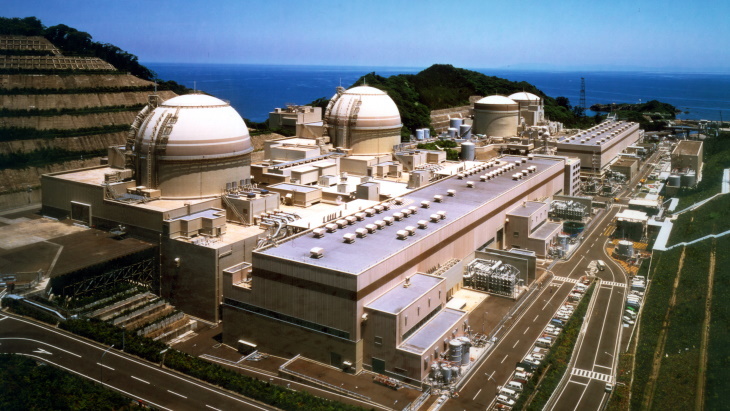
Source: https://www.world-nuclear-news.org/Articles/Kozloduy-used-fuel-storage-granted-open-ended-lice
Bulgaria's Nuclear Regulatory Agency has issued a fresh non-time-limited licence to operate the used fuel storage facility at the Kozloduy nuclear power plant.
The amended licence follows the amendments introducted in March this year to the country's Law on the Safe Use of Nuclear Energy. Instead of the licence being limited by time - notably for 10 years - it is open-ended but with a condition within the licence to carry out a safety review at least every 10 years.
The Agency said "the results of this review should justify the safe operation of the facility and are a prerequisite for the chairman of the NRA to issue an order for their approval and determine the period for carrying out the next periodic safety review".
The Kozloduy plant is in the northwest of Bulgaria on the Danube River and provides about 34% of the country's electricity. It features two Russian-designed VVER-1000 units currently in operation, which have both been through refurbishment and life extension programmes to enable operation for 60 years.
According to World Nuclear Association's Information Paper on Nuclear Power in Bulgaria, used fuel at Kozloduy is initially stored in a pool at the site which was built in 1990 and upgraded and given a new licence by the Bulgarian Nuclear Regulatory Agency in 2001. A dry used fuel storage facility was built near this at Kozloduy and opened in May 2011 with a capacity of 5200 fuel assemblies in 72 casks for storage for up to 50 years.
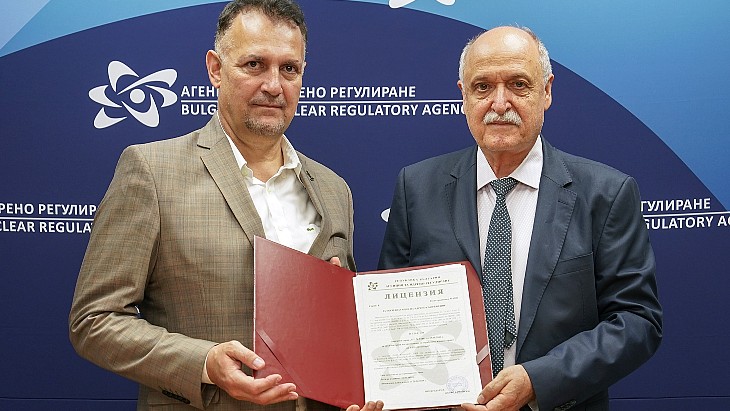
Lawmakers in California have approved a $400m (€374m) loan to keep the two-unit Diablo Canyon nuclear power station operating until 2030 after initially expressing concerns over the cost to the taxpayer.
The state’s approved includes the $400m allocation, along with a requirement for the Department of Water Resources to report on how the money will be spent.
There had been criticism and concern surrounding the loan, with some arguing that taxpayers will end up footing the bill for Diablo Canyon operator Pacific Gas & Electric and that the loan will never be paid back to the general fund, putting the burden on taxpayers.
Local press reports said the approval of the loan and the decision to keep the plant open has caused friction between governor Gavin Newsom and lawmakers, with environmental and anti-nuclear advocates warning of a growing price tag to keep the plant open and ongoing legal challenges related to the environmental impacts of extending the plant’s life.
Newsom argued that Diablo Canyon is critical for maintaining grid stability during the state’s transition to clean energy, while legislative leaders questioned the necessity and cost-effectiveness of keeping the facility open.
Diablo Canyon, California’s last commercial nuclear power station, contributes roughly 9% of the state’s energy and was initially set to close in 2025 before Newsom passed a bill to extend its life to 2030.
PG&E, meanwhile, has filed a licence renewal application with the Nuclear Regulatory Commission that could eventually see Diablo Canyon’s operational lifetime extended by up to 20 years to the mid-2040s.
The current operating licences for Units 1 and 2, both Westinghouse pressurised water reactors, were set to expire in 2024 and 2025.
In 2022 the Biden administration finalised up to $1.1bn in credit payments for the continued operation of Diablo Canyon, saying nuclear power is critical in curbing climate change and it wants to keep plants open ahead of the development of next-generation reactors. Biden wants to decarbonise the power grid by 2035.
The credits are to be paid in installments until 2026, with the amount of the annual payment to be adjusted based on factors including actual costs incurred to extend the operation of Diablo Canyon.
PG&E has been quoted in press reports as saying the federal credits will help the company pay back the state loan.
Source: https://www.world-nuclear-news.org/Articles/SMR-power-plant-planned-for-Swedish-site
Small modular reactor project development company Kärnfull Next has announced the municipality of Valdemarsvik in Östergötland county in southeastern Sweden as a new candidate site to host up to six reactors.
The company has entered into an exclusive partnership agreement with landowner Latona Group for the exploration rights for nuclear power on the site. "The ongoing study, expected to be finalised after the summer, has shown promising preliminary results leading the companies to jointly inform the municipality, site neighbours and now the general public about the plans for an SMR Campus," Kärnfull Next said.
The company noted that the property includes areas that were identified as suitable for nuclear power in studies going back as far back as the 1970s. With more than 1300 hectares in total, it said the site was appealing for co-location with 2030s energy-intensive industries, such as AI data centres. The large coastal site in Östergötland would be part of Kärnfull Next's Re:Firm South SMR programme, aiming to expand carbon-free and dispatchable energy production across southern Sweden.
"Location, topography and cooling conditions in a forward-looking municipality with extensive rural areas are examples of early indications of a positive outcome from the current stage," it said. "The project in Valdemarsvik offers significant opportunities for local job creation - a single SMR is estimated to create around 500 direct and indirect jobs per year for 70 years."
The SMR campus in Valdemarsvik is initially planned to host between four and six small light water reactors, adding between 10-15 TWh of electricity generation per year.
"We are very enthusiastic about the indications from our preliminary study in Valdemarsvik," said Kärnfull Next CEO Christian Sjölander. "This site has potential to become a key component in our programme to supply large amounts of stable and sustainable energy to regions with significant capacity needs, and create substantial economic and social benefits for the local communities."
Gustav Carp, owner of Latona Group, added: "We are very pleased to collaborate with Kärnfull Next on this exciting project. The property is likely to offer uniquely favourable conditions for nuclear power, and we look forward to being part of the development of fossil-free energy production in the region. This initiative can create significant value for Valdemarsvik and its residents."
In March 2022, Kärnfull Next signed a memorandum of understanding with GE Hitachi Nuclear Energy on the deployment of the BWRX-300 in Sweden.
Kärnfull Next has been conducting site selection and feasibility studies in several municipalities in Sweden since 2022. By establishing multiple SMR parks as part of the same programme, the company expects to achieve economies of scale in terms of technology selection, construction partners, power purchase agreements and financing partners.
In August 2023, Nyköping was announced as another candidate site within the programme. Kärnfull Next said further feasibility studies are expected "to reach sufficient maturity levels to be announced later this year".
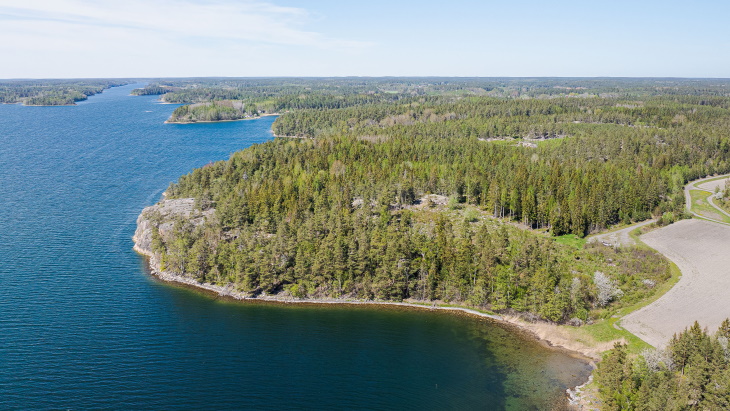
Source: https://www.world-nuclear-news.org/Articles/Grossi-praises-Brazil-s-contributions-to-nuclear-d
International Atomic Energy Agency Director General Rafael Mariano Grossi has highlighted the importance of Brazil for the global nuclear sector. During a trip to the country last week, he signed an agreement formalising the designation of Brazil's Institute for Energy and Nuclear Research as an IAEA Collaborating Centre.
"As we face the challenge of climate change, the key role of nuclear energy is set to grow and Brazil is uniquely situated to take full advantage of this," Grossi said in an address to the Chamber of Deputies, the lower house of the National Congress. "A global energy debate without Brazil makes no sense. A global nuclear debate without Brazil makes no sense."
Speaking with Minister of Mines and Energy Alexandre Silveira, Grossi said: "The IAEA encourages the continuous development of the fuel cycle in Brazil, given its potential to become a key actor in the nuclear sector production chain. These developments are crucial for strategic growth and energy security in the country."
He also addressed the Brazilian Nuclear Programme Development Committee, highlighting the critical role of nuclear energy for Brazil's economic growth and future decarbonisation plans.
During his visit, Grossi also highlighted the first-of-its-kind collaboration of the IAEA with the G20 on nuclear power. This new cooperation started this year when the Brazilian Presidency invited the IAEA to participate in the G20's Energy Transitions Working Group. The IAEA is presenting a series of briefings and reports to inform G20 members on the key role that nuclear energy can play in the energy mix and emphasising the need to accelerate financing in order to reach net zero targets.
In Rio de Janeiro, he visited the Nuclear Medicine Service at António Pedro University Hospital, where doctors explained how the IAEA's support, providing advanced equipment and training, has greatly improved early cancer detection and treatment quality.
The IAEA is also supporting the Brazilian Navy in its goals to increase medical services for remote communities located in the Amazon River delta. Two mammography machines have been installed on the ships Soares de Meirelles and Carlos Chagas, allowing these communities to have access to breast cancer diagnostic services for the first time.
Grossi also signed an agreement with Minister of Science, Technology and Innovation Luciana Santos to use nuclear science to study harmful algal blooms, microplastics, ocean acidification and more in Antarctica.
He also met with Admiral Marcos Olsen and discussions included Brazil's plans to develop naval nuclear propulsion. "The IAEA and Brazil are committed to working together for highest non-proliferation standards as Brazil advances naval nuclear propulsion plans," Grossi said.
Grossi also visited the headquarters of the Brazilian-Argentine Agency for Accounting and Control of Nuclear Materials (ABACC). "ABACC has played a key role in regional stability and its importance will only grow as Brazil embarks on naval nuclear propulsion. I am looking forward to continuing the strong cooperation between the IAEA, ABACC, Brazil and Argentina," he said.
IAEA Collaborating Centre
The IAEA's first Collaborating Centre on Nuclear Security in Latin America - the National Nuclear Energy Commission's (CNEN's) Instituto de Pesquisas Energéticas e Nucleares (IPEN-CNEN) - was also established during the trip. IPEN-CNEN, CNEN's technical-scientific unit in São Paulo, expressed interest in joining this scheme and, on 7 June, the IAEA approved the proposal for its designation.
An agreement was signed on 21 June by Grossi and CNEN President Francisco Rondinelli, formalising the designation. As an IAEA Collaborating Centre, IPEN-CNEN will assist the IAEA in activities in the areas of computer security, radiation detection and physical protection for nuclear security, for a period of four years.
"All the activities we have, of the International Atomic Energy Agency, in Brazil, need to have the indispensable cooperation of CNEN," Grossi said. "We recognise this crucial role of CNEN in the development of nuclear technology in the country. We are very grateful for this cooperation, which will continue and increase more and more."
Brazil currently has two operating nuclear power reactors and a third under construction. The country's 2050 national energy plan indicates that it could add 10 GW of nuclear in the next 30 years, which is enough to provide power for about 10 million people, with a possibility to include small modular reactors in its energy mix after 2030.
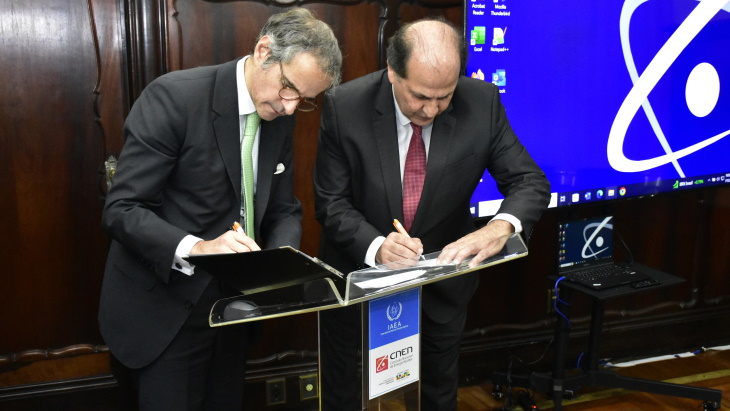
Source: https://www.world-nuclear-news.org/Articles/Rossing-eyes-operation-beyond-2036
2023 production from the Rössing uranium mine in Namibia was 10% higher than in 2022 and in line with operational plans, and Rössing Uranium Ltd says it is focused on extending the life of the mine beyond 2036.
The company provided an update on 2023 production as it officially launched its 2023 Sustainability and Performance Report, on 18 June.
"Rössing Uranium has been a feature of the Namibian economy for close to 48 years and is therefore well versed in the nation's mining business making significant contributions to the development of Namibia," Managing Director Johan Coetzee said.
Rössing produced 6.4 million pounds U3O8 (2462 tU) in 2023 and sold 6.9 million pounds U3O8. Around 1.8 million pounds were shipped to western converters and sold to customers in North America, Asia (excluding China) and Europe, Middle East and Africa; 3.7 million pounds were shipped and sold to China. An additional 1.4 million pounds were sold to non-utility customers (traders and funds) on the spot market, capitalising on the sudden price spike during the year. The company said it has benefited from spot market prices under its sales agreement with China National Nuclear Corporation, of which its majority shareholder China National Uranium Corporation is a subsidiary.
In February 2023, Rössing Uranium's board approved extending the operating life of the mine until 2036. A 13-year contract was signed with Beifang Mining to commence with a full contract mining service from 2024 to 2036, and the first blast was taken in the new Phase 4 pushback, ahead of schedule, on 21 December 2023. The Rössing infrastructure and processing plant are also being upgraded, including the construction of a 15 MWe photovoltaic solar power plant, as well as expansion of the tailings storage facility to accommodate ten years of additional tailings from ore processing. The solar plant is targeting completion by the end of 2024, and the tailing expansion by the end of 2025.
Funds have also been allocated for two feasibility studies - both to include the construction of pilot plants - for dewatering of the tailings stream to a higher density (thickened) tailings and for onsite treatment of plant solutions to reduce freshwater consumption. Both studies involve the construction of pilot plants. These studies are targeting completion by the end of this year, to inform an investment decision for full-scale execution by the end of 2026.
"Rössing’s long-term strategy is now focused on identifying an economic pathway for achieving higher production rates from new sources of ore, and extending the LoME [Life of Mine extension] beyond 2036," the company said. "The potential for further expansion of the current SJ Pit is limited and the focus is therefore on development of a new open pit within the mining lease (ML28). The objective is to commence before 2030 and supplement feed from the SJ Pit to achieve higher production rates."
"2024 will be another important year for Rössing Uranium as we begin with substantial pushback work for the Phase 4 extension, while evaluating new opportunities that could potentially extend the life-of-mine beyond 2036," Coetzee said.
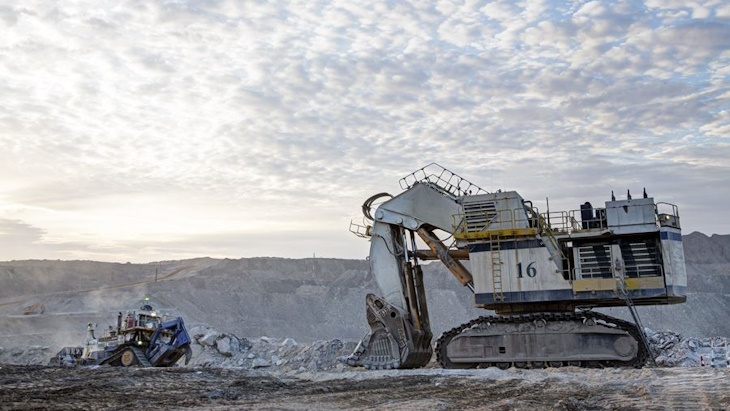
Source: https://www.world-nuclear-news.org/Articles/GEN-energija-lists-JEK2-studies-to-be-published-ah
Slovenia's GEN energija has published an analysis concluding that the proposed JEK2 new nuclear project location is suitable from a seismic activity point of view - and also outlined a series of studies it aims to publish before a referendum is held on nuclear energy later this year.
In its latest update on the state of the JEK2 project for two new nuclear units near the existing Krško nuclear power plant, GEN said "several analyses were carried out, which investigated the geology of the Krška basin and the proximity of possible JEK2 locations. They showed that the area [of the existing plant and earmarked for the proposed plant] ... is suitable for these facilities from the point of view of seismic activity. The Krška basin is considered to be the most geologically, geotechnically and seismologically researched area in Slovenia and beyond. The results of the research so far show that the design seismic loads (displacements, velocities and accelerations of the ground) allow the safe operation of the nuclear power plant and the safe design, construction and operation of JEK2, in accordance with international nuclear standards".
GEN says that about 80 - 20% - of the world's nuclear power plants are located and operate safely in areas of moderate or high seismic risk, with Slovenia located in a "moderate" area and has referenced there has been on-going safety research dating back decades.
The company has also listed a series of studies and documents which, at the request of the Ministry of Finance and the Ministry of Environment, Space and Energy, will be published by October, to "enable citizens to make an informed decision in the autumn referendum".
As well as the seismic study, there will also be ones on flood safety, how the new units will be integrated within the national electricity grid, an economic analysis including the "related and indirect investment costs", the financial and security risks relating to the import of nuclear fuel and the planned handling of waste from the new plant.
GEN energija is also conducting an information roadshow across the country to present information and answer questions about the proposed project. There is also a dedicated jek2.si website.
The JEK2 project
Slovenia's plan is to build the new nuclear power plant, with up to 2400 MW capacity, next to its existing nuclear power plant, Krško, a 696 MWe pressurised water reactor which generates about one-third of the country's electricity and which is co-owned by neighbouring Croatia. Prime Minister Robert Golob has committed to holding a referendum on the project before it goes ahead, and has suggested it could be held later in 2024.
The current timetable for the project is for a final investment decision to be taken in 2028, with construction beginning in 2032. In October, GEN Energy CEO Dejan Paravan said there were three technology providers being considered for the project - Westinghouse, EDF and Korea Hydro & Nuclear Power - who all had strengths and "the decision will not be easy".
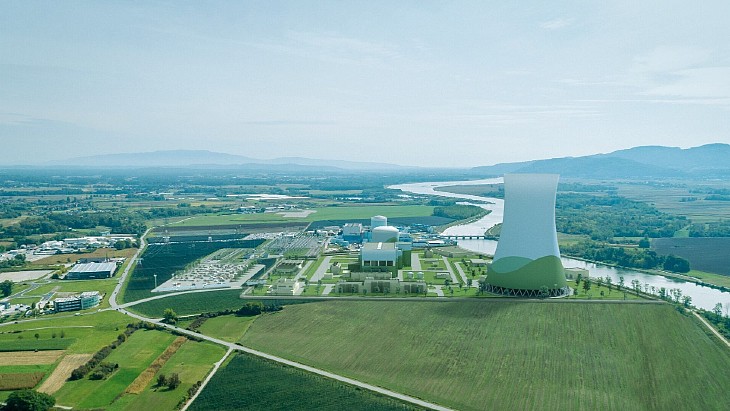
Mitsubishi Heavy Industries (MHI) has almost finished designing its next-generation large-scale nuclear reactor, paving the way for possible construction once a site is chosen, company president Seiji Izumisawa told Bloomberg
The Tokyo-based company can start building the facility once a site for it is established in Japan and some late-stage tests are completed, Izumisawa said. It will take about 10 years to construct and start operations.
“Once a site is decided, things will move forward,” he said in an interview with Bloomberg News.
The hope is that a selection will be made “not too far in the future” so that knowledge and experience surrounding reactor construction can be passed to the next generation of engineers, he said.
According to MHI, the SRZ-1200 is based on improved Japanese regulatory safety standards which incorporate lessons learned from the 2011 Fukushima-Daiichi accident.
MHI has also said it want to study the possibility of using plant for clean hydrogen production.
The SRZ-1200 has been designed in collaboration with utilities Hokkaido Electric Power Company, Kansai Electric Power Company, Kyushu Electric Power Company and Shikoku Electric Power Company, which all have experience in operating PWR plants.
Petyo Ivanov tells industry conference ‘we live in some tough times related to costs’.
Negotiations with financial institutions need to be concluded and details of capital expenditure and operational expenditure fixed as Bulgaria lays the groundwork for new nuclear power reactors, a conference has heard.
Petyo Ivanov, chief executive officer of state nuclear project company Kozloduy Nuclear Power Plant New Build (KNPP-NB), told the Bulgarian Atomic Forum (Bulatom) event that every financing model for planned new reactors at the existing Kozloduy nuclear site is “on the table”. This includes contracts for difference (CfD) and power purchase agreements.
“We acknowledge the importance of financing because we recognise that we live in some tough times related to financial costs,” Ivanov said.
He said a financial model give projections for the levelised cost of energy (LCOE) from new reactors and how this would fit into the market. LCOE captures both capital and operating costs that need to be covered. It is essentially the long-term price at which the electricity produced by a power plant will have to be sold for the investor to cover all their costs.
Ivanov warned that “we are experiencing the highest financial costs in the past 20 to 25 years and we did have the expectation that these rates would go down”, potentially leading to lower borrowing costs.
Vince Zabieleski, a partner at UK-based law firm Pillsbury Winthrop Shaw Pittman and a former senior legal counsel at Emirates Nuclear Energy Corporation for the Barakah nuclear station project in the UAE, told the conference that Hinkley Point C in England was financed with CfD, which turned out to be “less than ideal”.
He said EDF, the French state-owned company building the two EPR plants at Hinkley Point C, is “a massive company and it could take on the risk” of a CfD financing arrangement. “But under the CfD, the developer still takes all the risk,” he said.
With a CfD financing model, developers have to finance the entire construction cost of a nuclear project up front, and only begin receiving revenue when the station starts generating electricity.
This model led to the cancellation of potential projects, such as Hitachi’s project at Wylfa Newydd in Wales and Toshiba’s at Moorside in Cumbria, England.
Zabieleski said the CfD model results in about a third of the cost being interest during construction. “So that doesn’t work,” he added.
He said that for Sizewell C, the next planned nuclear project in the UK, there are plans to use the regulated asset base (RAB) model, which he said “actually is probably the best way to go ahead and finance a nuclear power plant”.
He said the RAB model is roughly analogous to the way that the US financed its nuclear fleet through passing the costs on to the eventual customers.
The RAB model model gives a nuclear company the right to a regulated revenue stream throughout the construction, commissioning and operations phase of a new nuclear project. This is funded by a charge placed on electricity suppliers and ultimately comes from consumers through their electricity bills.
Isolating Lenders And Investors From Risk
RAB financing essentially gives private investors greater certainty through a lower and more reliable rate of return in the early stages of a project, lowering the cost of financing it.
“I cannot emphasise how important it is to have the business structure organised in a way that isolates the lenders and the investors from risk,” Zabieleski said.
Bulgaria is planning to build two Westinghouse-supplied AP1000 plants at Kozloduy, but has not yet finalised the details of financing for a project that the American Nuclear Society has said could cost $13bn (€12.1bn). Other reports have said Sofia expects the cost of the two-unit Kozloduy expansion to not exceed $14bn.
In December 2023, the Bulgarian parliament approved a government proposal to inject up to €766m ($833m) into KNPP-NB to fund the initial stages of the project, but this would not include construction.
Valentin Nikolov, chief executive of the Kozloduy nuclear power station, has said that the financing for the first AP1000 unit, which would be Kozloduy-7, is to be primarily sourced from commercial banks, covering 70% of the project, with the Bulgarian government contributing the remaining 30%.
Bulgaria’s energy ministry said recently the US Export-Import Bank (Exim) has said it will start work on the structuring of financing for the project with the aim of meeting a mid-2025 deadline set by parliament.
There are two 1,000-MW Russia-designed VVER units already in operation at Kozloduy – Bulgaria’s only commercial nuclear power station – and four older VVER units that have been permanently shut down.
Source: https://www.world-nuclear-news.org/Articles/Paladin-acquires-Fission-creating-multi-asset-uran
Australia-headquartered Paladin Energy Limited is to acquire Canadian uranium project developer Fission Uranium Corp in a transaction the companies say will create a "globally significant uranium company" listed on Australian and Canadian stock exchanges and will help advance Fission's Patterson Lake South project towards production.
The combination will mean shareholders of both companies will benefit from an enhanced project development pipeline, with "multi-asset production" expected by 2029, and a diversified presence across leading uranium mining jurisdictions of Canada, Namibia and Australia, they said.
Paladin, which is listed on the Australian Securities Exchange (ASX), has a 75% ownership of the Langer Heinrich uranium mine in Namibia, which returned to commercial operation earlier this year for the first time since 2018. The company's portfolio of uranium exploration and development assets in Canada and Australia includes the Michelin project in Newfoundland and Labrador, which is at the preliminary economic assessment stage. Fission, listed on the Toronto Stock Exchange (TSX), is the 100% owner of the Patterson Lake South (PLS) high-grade uranium project in Saskatchewan, for which a feasibility study has highlighted the potential for a 10-year mine life with production of 9.1 million pounds U3O8 (3500 tU) per year.
Paladin will acquire 100% of the issued and outstanding shares of Fission by way of a court approved plan of arrangement under the Canada Business Corporation Act. On completion of the transaction, Fission shareholders will own 24.0% of Paladin, which will have a pro-forma market capitalisation of approximately USD3.5 billion, the companies said. Paladin has applied for listing of the Paladin Shares on the Toronto Stock Exchange, concurrent with completion of the transaction, so that Fission shareholders will receive TSX-listed Paladin shares.
Paladin CEO Ian Purdy said Fission is a "natural fit" for the company's portfolio. "The addition of PLS creates a leading Canadian development hub alongside Paladin's Michelin project, with exploration upside across all Canadian properties," he said. The transaction would also de-risk the development of PLS for Fission shareholders, underpinned by production from Langer Heinrich and Paladin's offtake contract book. "Paladin will bring the required investment to PLS in order to advance it towards production," he added.
Fission President and CEO Ross McElroy said the combination would create a world class diverse uranium producer, adding a class leading development project in a Tier 1 jurisdiction with the ability to expand production and cash flow profiles in the near term. "With commercial production at Langer Heinrich and further development milestones at PLS, this opportunity will create a diverse pureplay uranium company with current production and a deep pipeline of near and mid-term assets available to investors," he added.
The combination will create "one of the largest amongst pure-play uranium companies" with pro-forma U3O8 mineral resources of 544 million pounds U3O8 and ore reserves of 157 mllion pounds across conventional open-pit and high-grade underground orebodies, with multi-asset production expected "by the end of the decade," the companies said.
The transaction is targeted to close in the third quarter of this year, subject to satisfaction of conditions.
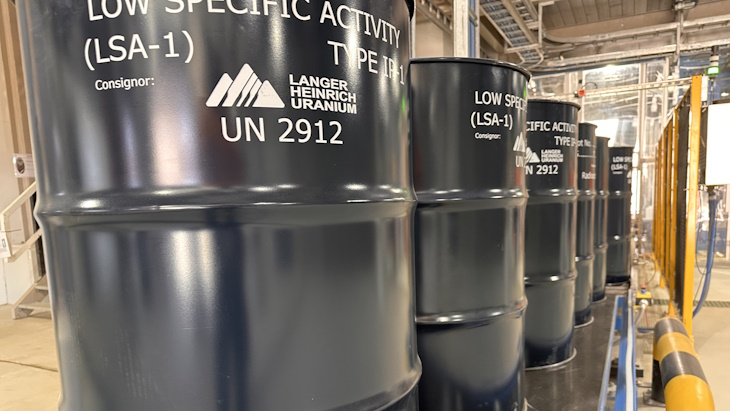
Source: https://www.world-nuclear-news.org/Articles/Steam-generators-in-place-at-fourth-Kudankulam-uni
The installation of the steam generators in the designed position at unit 4 of the Kudankulam nuclear power plant in India's Tamil Nadu state was completed on 19 June, Russian state nuclear corporation Rosatom announced.
All four steam generators - each with a diameter of more than 4 metres, about 14 metres long and weighing 340 tonnes - were installed using the 'open top' method, first used at Kudankulam unit 3. This method allows large equipment to be loaded into the reactor building using a heavy-duty crane before the reactor dome is closed. It can significantly cut the time taken to carry out the installation.
"The installation of steam generators at unit 4 by our Indian partners was carried out regularly and quite quickly," said Anton Chistyakov, deputy director for projects in India, head of the construction department at the Kudankulam NPP site of Atomstroyexport JSC. "The open top installation technology, proposed by the Russian side back at Unit 3, again confirmed its effectiveness during this installation, especially when all installation procedures were performed with such high quality as demonstrated by contractors at the construction of the Kudankulam NPP."
Installation of the steam generators followed that of the unit's reactor pressure vessel, weighing in at over 317 tonnes. That component was installed on 24 January, also using the open top method.
Kudankulam is home to two operating Russian-supplied VVER-1000 pressurised water reactors which are owned and operated by the Nuclear Power Corporation of India Ltd. Four further VVERs are under construction: work started on units 3 and 4 in 2017, and on units 5 and 6 in 2021. A fourth phase comprising two VVER-1200 reactors - Kudankulam 7 and 8 - has been proposed.
The general contractor for the project is Rosatom subsidiary Atomstroyexport, the general designer is Atomenergoproekt and the general designer is OKB Gidropress.
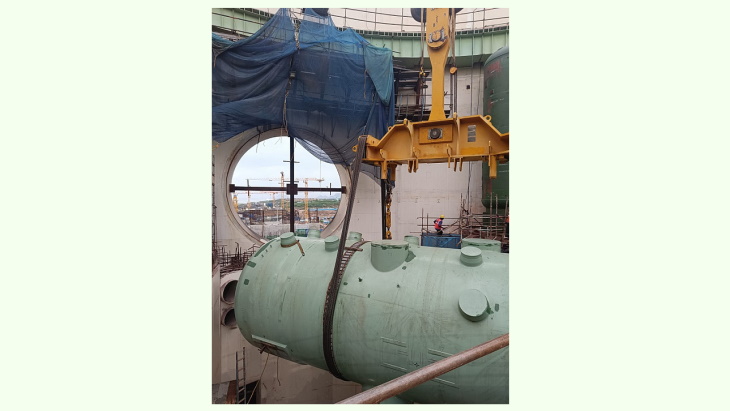
Source: https://www.world-nuclear-news.org/Articles/Construction-complete-at-WIPP-ventilation-system
Now that construction of the new large-scale ventilation system at the Waste Isolation Pilot Plant (WIPP) is complete, the US Department of Environmental Management is aiming for it to be fully operational in 2026.
WIPP, in New Mexico, is the USA's only repository for the disposal of transuranic, or TRU, waste which includes clothing, tools, rags, residues, debris, soil and other items contaminated with small amounts of plutonium and other man-made radioactive elements from the US military programme. The repository is excavated out of a natural rock salt layer 650 metres below ground, and has been operational since 1999.
The new Safety Significant Confinement Ventilation System (SSCVS) is being built in tandem with a new utility shaft. The SSCVS will pull air through the repository, pre-filter it to remove salt and can also, when required, send the air through a high-efficiency particulate air (HEPA) filtration system before releasing it to the environment. When it is fully operational, the new system will increase underground airflow from 170,000 cubic feet (4814 cubic metres) per minute up to 540,000 cubic feet per minute. The increased airflow will mean that activities to emplace sealed waste drums in the repository can take place at the same time as facility mining and maintenance operations.
WIPP's management and operations contractor, Salado Isolation Mining Contractors (SIMCO), was able to begin commissioning phase work of initial portions of the SSCVS facility and systems in October 2023. "Completing SSCVS construction allows us to pivot our focus to testing and commissioning the remaining SSCVS systems," said Ken Harrawood, SIMCO's president and programme manager at WIPP.
Testing and commissioning includes testing systems, integration, developing operational procedures and guidelines, training and qualifying staff, after which the facility will be handed over to trained WIPP operations personnel to bring it online. The SSCVS commissioning phase is currently 85% complete, the Office of Environmental Management said.
Construction of the SSCVS began in 2018 with completion originally envisaged for 2021, but progress was impacted when WIPP, like most of the office's field sites, focused on essential mission-critical operations during the COVID-19 pandemic. The office has identified completing the commissioning of the SSCVS, and initiating the readiness review process, as one of its top priorities for 2024.

Source: https://www.world-nuclear-news.org/Articles/Committee-to-evaluate-nuclear-power-option-for-Nor
The Norwegian government has appointed a committee to conduct a broad review and assessment of various aspects of a possible future establishment of nuclear power in the country. It must deliver its report by 1 April 2026.
"The need for emission-free and stable energy sources that can help deal with the natural and climate crisis and meet an increasing need for power, technological development, as well as plans for the establishment of nuclear power production by private actors in collaboration with municipalities, have contributed to the question of nuclear power being brought up to date again," said Energy Minister Terje Aasland. "Nuclear power is a complex energy source that affects a number of areas of society. There is therefore a need to obtain an updated and solid knowledge base on nuclear power as a possible energy source in the Norwegian power system."
The 12-person committee will be headed by Kristin Halvorsen, director of the Centre for International Climate and Environmental Research - Oslo (Cicero).
The Ministry of Energy said it has drawn up the mandate for the committee in consultation with several other ministries. The mandate "calls for a broad assessment of complex questions, and the selection is therefore put together by people with expertise and experience from various fields," the government said.
"An important topic the committee should shed light on is nuclear power's suitability for the Norwegian power system, research and technology development within various concepts for nuclear power (including fusion), costs and other significant consequences for authorities (including the municipal sector) and private actors, area and environmental effects, waste issues, nuclear safety, safeguarding and non-proliferation, preparedness and competence," the government said. "The committee shall discuss advantages and disadvantages of nuclear power, describe the current regulations and point out the need for regulatory development and other prerequisites that must be in place for any future establishment of commercial and industry-driven nuclear power.
"The committee shall provide an updated knowledge base on various types of nuclear power technology, technological maturity, assumed time perspective for scale-up and commercial availability, and costs. An account must also be given of relevant investment factors and requirements for infrastructure, including the need for network connection and what requirements must be made for a suitable location."
The Ministry of Energy has been given the authority to make small changes to the committee's mandate and to appoint a secretariat for the committee. "It is not realistic for the committee to possess all the necessary knowledge within the various areas of the themes," it said. "A resource group must therefore be established, consisting of professionals, who can assist and give input to the committee in important subject areas, and ensure the involvement of central specialist communities. The committee can engage external expertise if necessary."
Between 1951 and 2019, Norway operated four research reactors at the Kjeller and Halden sites, but these were not for power production. "As a starting point, Norway therefore has no experience with development, commercial operation, regulation and licence processing of this form of power production," the government said.
However, the government noted that nuclear power "has become part of the energy debate and plans for its development are being promoted".
In November 2023, the Ministry of Energy received notification of proposals for a study programme from Norsk Kjernekraft. This is the initial step in the licensing process, and triggers administrative law requirements for a proper case management. Norsk Kjernekraft wants to construct a nuclear power plant consisting of small modular reactors (SMRs) with a total output of 1500 MW in Taftøy Næringspark in Aure and Heim municipalities. The company has also announced ongoing work with several similar projects. In addition, several other municipalities and county councils have expressed an interest in nuclear power.
